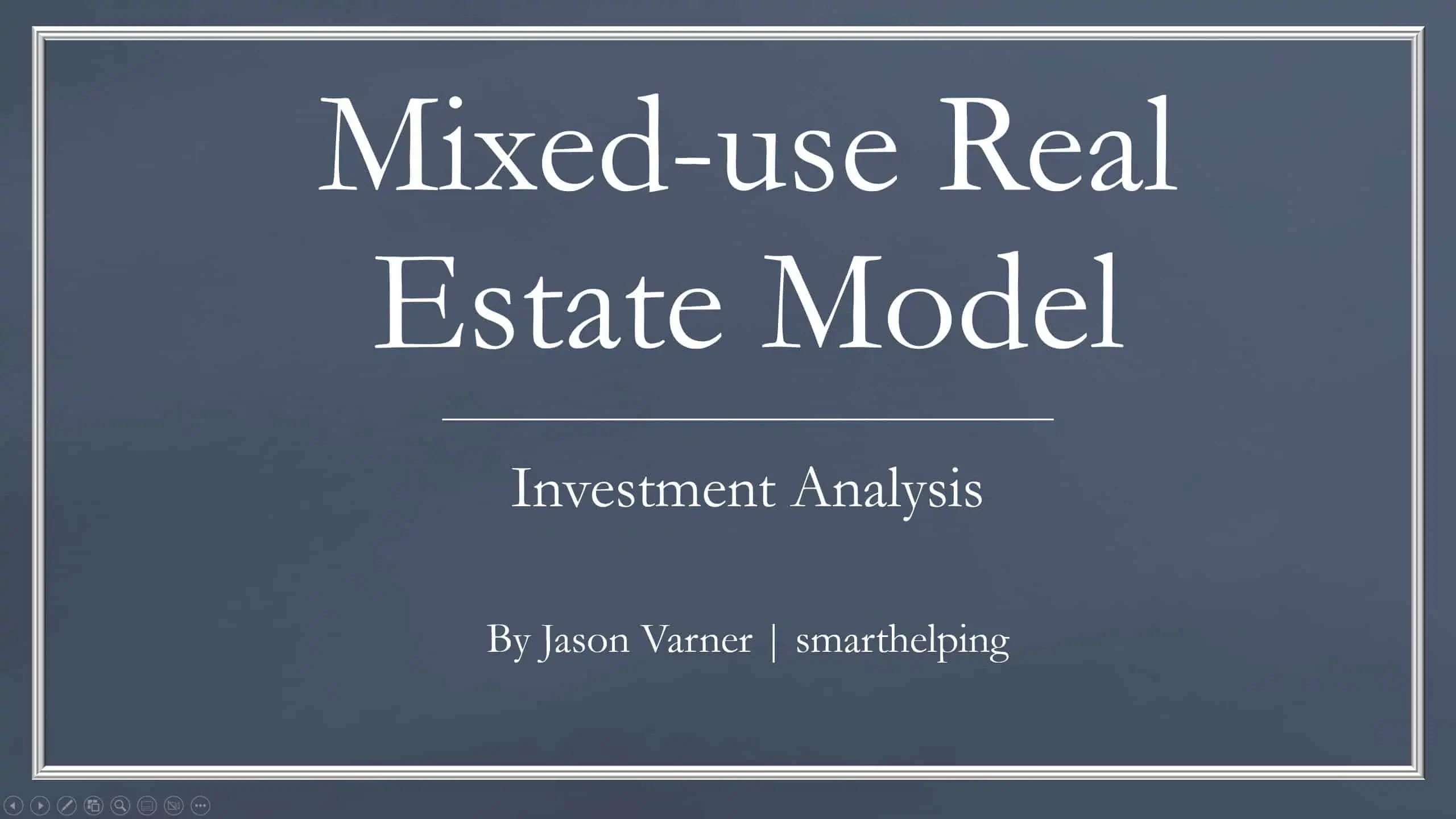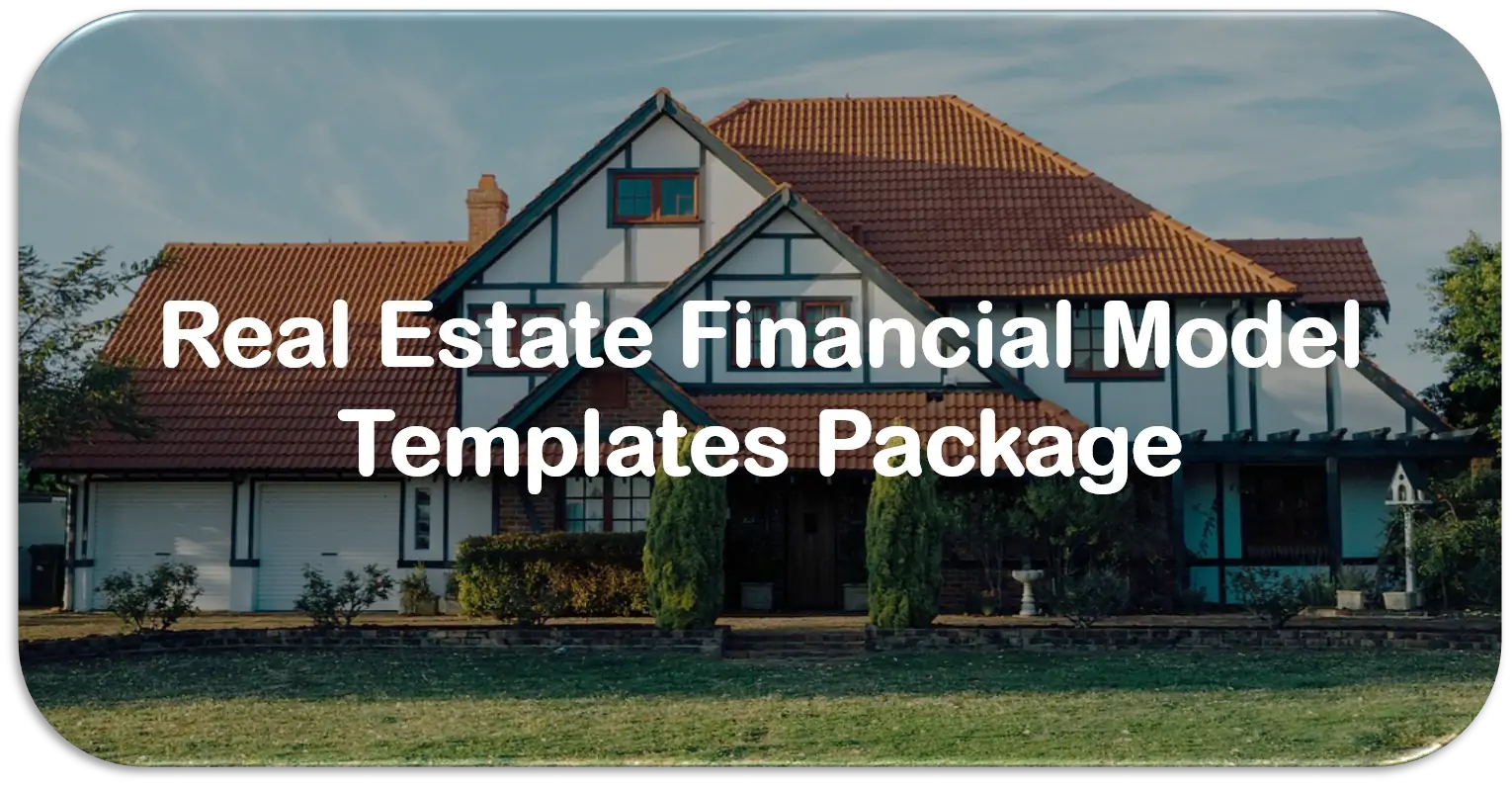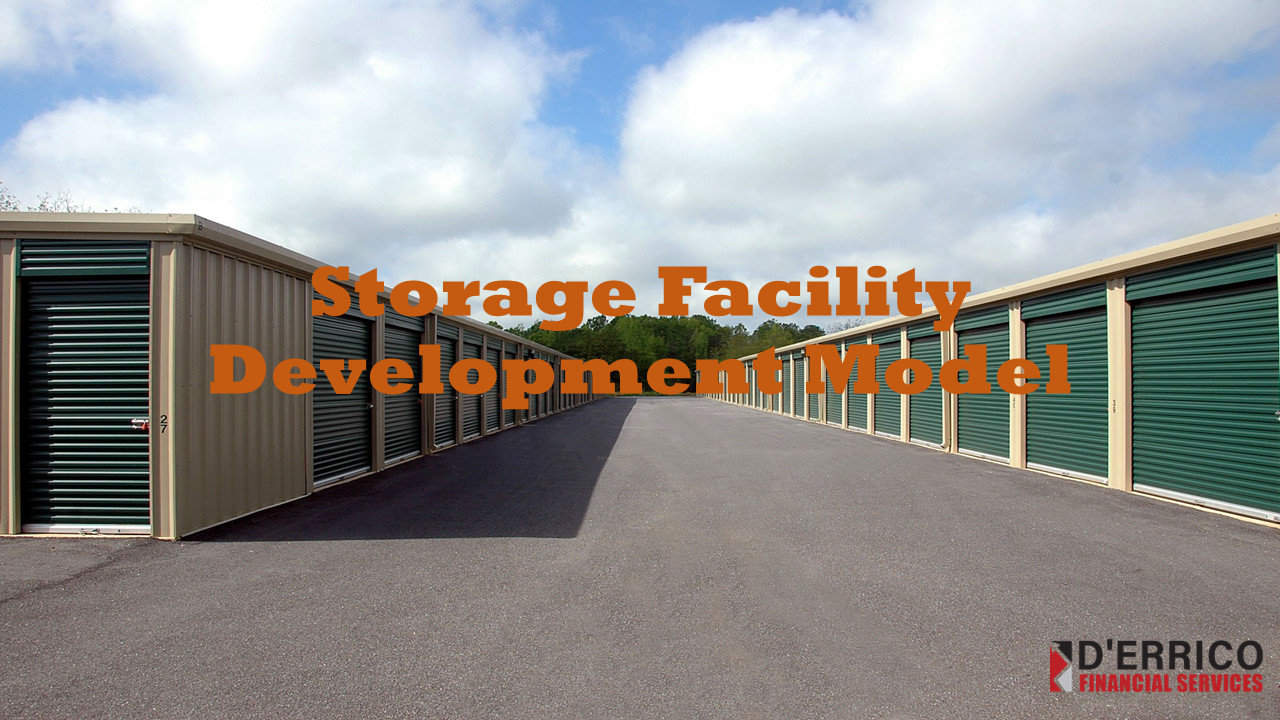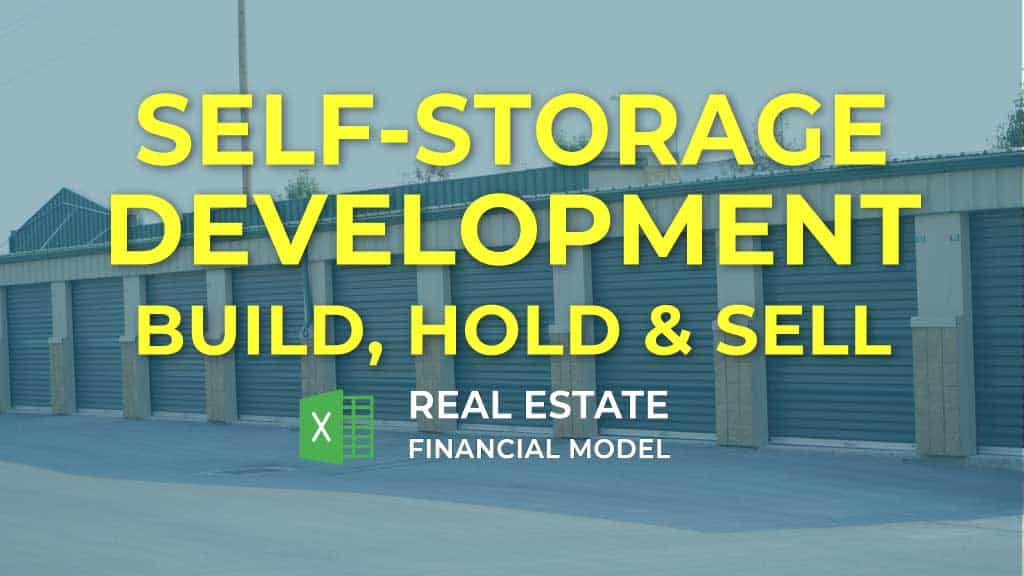Self Storage – Real Estate Development Model
This is a fully functional, institutional quality and dynamic real estate Development Financial Model. It was set up with the guidance of a real-estate expert. It’s a powerful model, yet, user-friendly, that will provide to the user a detailed Excel spreadsheet in which, the viability of an investment in a Self Storage property can be assessed with accuracy. The template is monthly in nature, and it is a 100% unlocked Excel file with fully transparent formulas that can be further tailored to suit your particular needs. Model Options:

This is a fully functional, institutional quality, and dynamic real estate Development Financial Model. It was set up with the guidance of a real estate expert. It’s a powerful model, yet, user-friendly, that will provide to the user a detailed Excel spreadsheet in which, the viability of an investment in a Self Storage property can be assessed with accuracy.
The template is monthly in nature, and it is a 100% unlocked Excel file with fully transparent formulas that can be further tailored to suit your particular needs.
Model Options:
• Dynamic Monthly & Annual Cash Flow: In order to calculate the key investments metrics needed to determine the feasibility of the project, and the value of a potential selling, the cash flow is calculated in a monthly base;
• Because this is a developing project model, the lease-up forecast takes into account the fact that during the construction phase there is no or limited revenue, and the construction loan interests are capitalized accordingly with the parameters defined in the executive summary sheet
• Dynamic construction budget: the construction expenses are modeled following an s-curve (normal distribution), meaning that construction expenses are projected in a way that you have few expenses in the beginning, and then they quickly ramp up to your full project costs;
• Dynamic equity financing: unlike an existing property acquisition where you only need to take your purchase price and multiply by a certain percentage and get the loan/equity amount required, this model, trough complex formulae and macros, works backward to get the required amount and timing for equity/loan funding.
• Construction Loan: The model assumes that first the construction expenses are funded through equity, and once we’ve used all available equity; we can, then, start drawing construction loan tranches to pay for the remaining costs of the project.
• Permanent Finance: the model also covers permanent financing, so once we actually have built out the property and the project has been stabilized, we’re likely going to refinance the project if we don’t decide to sell.
• The key drivers of the financial model and return metrics are shown on the summary tab. The summary tab also includes dynamic charts, which update automatically accordingly with the hold period. The Summary tab is meant to be printed, and as such the view mode is set to Print Preview by default.
• Equity Waterfall Model: the template provides a 3 tier equity waterfall model, so the user will be able to determine how much capital the limited partner and General partner will get, and their respective rates of return;
• Scenarios: The scenarios modeling sheets provide four possible scenarios based on the Rent, Vacancy, construction costs and exit, Cap rate variance, etc. The base scenario is defined by default with the inputs set on the Investment Summary and the Assumptions sheets.
Instructions
• The user only needs to input information into the dark blue font cells in the Investment Summary and Assumption sheets. If the contents of a cell are colored black, it means that is a formula.
• The template is provided with information from a hypothetical property, for demonstration purposes that must be erased for a real property valuation;
• The investment summary sheet provides an overview of the property based on several key metrics and assumptions.
• In the Assumptions sheet the user can define the remaining drivers;
• To assess the sale value of the property, this model is designed to capitalize on the NOI of the 12 months subsequent to the disposition divided by the defined exit cap rate;
• The maximum horizon for this model is ten (10) years;
• For revenue the user must provide the current rents, the type, quantity and square foot of the different units, taking into account the rentable area
• For Construction Budget, the user needs to set the budget and timing for different expense categories.
Similar Products
Other customers were also interested in...
Mixed-Use Real Estate Model: Leverage / JV Options
A general real estate model to plan all assumptions for up to 7 'uses' for a given property. Include... Read more
Real Estate Financial Model Templates Package
This is a collection of ready-made Excel financial model templates for real estate businesses and it... Read more
Apartment Building / Self-Storage / Multi-Family A...
This real estate model works great for acquisitions of apartment buildings, multi-family properties,... Read more
Real Estate Financial Model Bundle
This is a collection of financial model templates that provides the financial projections and valuat... Read more
Storage Facility Development Model
The Storage Facility Development model projects annual future cash flows from a storage facility fro... Read more
Real Estate Acquisition Financial Models Bundle
A collection of six Real Estate Development Financial Models offered at a discounted price you can�... Read more
Self Storage Development REFM Financial Model Exce...
Try Self Storage Development REFM Financial Plan. This well-tested, robust, and powerful template is... Read more
Real Estate – Industrial Acquisition Model
An Excel-based analysis tool for the acquisition, operation, and ultimate disposition of a single- o... Read more
Real Estate Multi-Family Development Excel Model
Real Estate Financial Model to evaluate a development project, with Equity Waterfall and Advanced Sc... Read more
Reviews
Jay;
This is a pretty good tool, and many elements reflect familiarity with self storage experience.
The model is good for a look back, weak for looking forward and projecting new ownership
There are areas the model could use enhancements and some are essential to self storage:
Does not include typical sources of Ancillary Income
Does not allow for the proper delineation of unit types and sizes, if the store uses premium pricing, the analyst will need to add a lot of rows and specify types
Does not allow for expansion or additional capital beyond inception
Management Fees not properly accounted for, no input for a minimum
One of the largest problems is the lack of an ability to account for unrentable space. For example, maintenance and insurance costs are often budgeted for $/SF, ALWAYS properly calculated on GSF. If this is a multi story climate controlled store, the model only accounts for NRSF, so the calc is way off. There is no provision for GSF to NRSF allowance
No schedules for staffing
Debt schedules are way too simplistic. Does not properly account for I/O and refinance
Missing several ROI metrics
Insufficient competitive rate comparison (unit type issue here again)
Needs acquisition cap rate sensitivity analysis (commencing acq, it has a limited terminal cap sensitivity)
Needs print macros
Needs BoE analysis
Insufficient debt parameters/loan calcs
Does not account for sponsor/GP promotes
Insufficient distribution analysis
needs acquisition costing and capX dynamics
Needs comparison of TOTAL acquisition costs to purchase price
Needs purchase price sensitivity calcs (specify metrics (yield, IRR), have it calc price you can pay
Expense Categories messy and needs expense reconciliation
Needs start date for rent increases delayed in model
Needs single input page
Needs comparison of OM/Broker projections to analyst projections
There are no calcs for ownership, only property level…
The model is good for a look back, very weak for looking forward and projecting new ownership
RETax calc simple, but good
good job accounting for equity split, (see above, too simplistic)
Good very basic scenario modeling
Great graphical outputs
If someone wants to co develop this model, they should contact me. [email protected] 561.797.2721 RK
Thank you for your feedback.
23 of 45 people found this review helpful.
You must log in to submit a review.




















